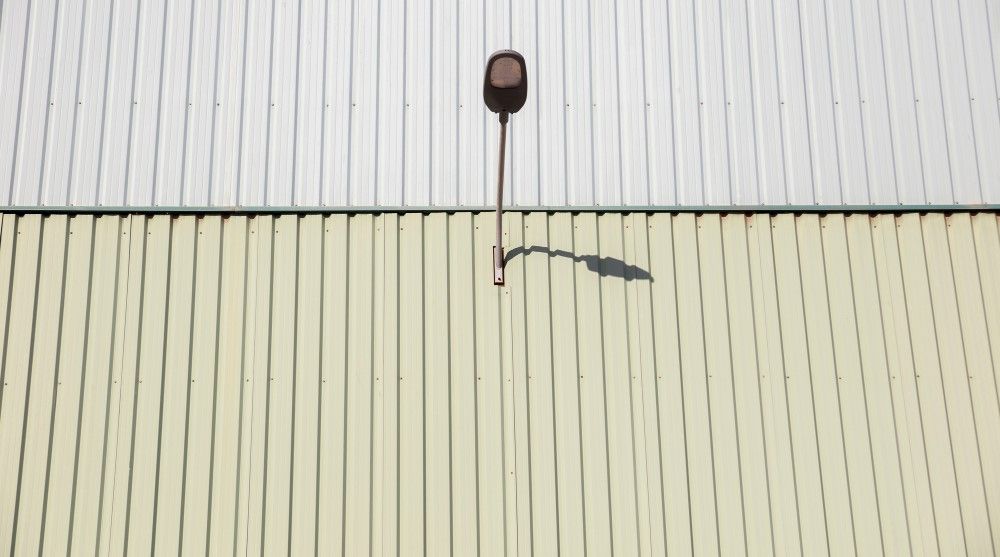Combating climate change is a major 21st century challenge. Nowhere is this more true for the chemicals suppliers who provide the paints, coatings, varnishes, fillers, adhesives, and the other hundred thousand chemical products that the construction industry needs to build.
“They’re requiring that new construction has these net-zero-type goals built in,” says Victoria Scarborough, a vice president at the industrial chemical consultancy ChemQuest. “And part of this big story is the cooling. You’ve got to get rid of the energy drain on the building itself.”

These goals were the inspiration for the growth in cool-roof and cool-wall coatings which are seeing year-on-year sales growth.
For example, the pigment maker Eckart produces an infrared reflective paint ingredient based on glass-encapsulated aluminium flakes. When originally designed several years ago, there was little interest in such coatings as energy was relatively cheap and demand for energy efficient coatings was low. “We really had a difficult time to convince customers to go that way,” explains Ulrich Schmidt, global head of technical marketing for the German-based manufacturer.
Fast-forward to a cost of living crisis and a spike in energy prices and demand has grown considerably.
“The situation changed,” recalls Schmidt. “We recently faced these harsh increases in the oil and gas prices; there is a much higher willingness in the market to think about new and partly disruptive ideas.”
According to Schmidt, the fundamental components of a coating are pigment, binder, and filler; however, a formulator's toolkit also consists of an astounding variety of surfactants, rheology modifiers, and other functional chemicals. Clay, silica, and titanium dioxide are common industrial ingredients that are used to increase opacity, performance, and bulk.

However, the science behind energy efficient coatings and the chemical raw materials used to make them is intense. At the simplest level, reflecting light is essential for heat management since nearly all of the solar energy that a wall or roof collects is turned into heat.
Standard outdoor, grey-coloured coatings reflect about 20% of sunlight. This jumps to 80% if a reflective roof coating is applied. However, the latest coating research and raw materials are looking for more.
“The goal of the newer technologies is to beat that; they want to be in the 98% range,” says Scarborough.
Using performance materials in place of typical fillers can help accomplish so-called passive cooling by altering the paint's interaction with heat. These materials don't receive much heat from the sun since they reflect the majority of light that strikes them. However, they also extract heat from the surface they are covering by releasing infrared radiation. For a cooling coating to be effective it must achieve both of these goals.
“Water vapor and other atmospheric gases absorb a lot of infrared light, trapping the heat right around the building,” explains a recent report on the topic by the chemical specialists at C&EN. “For the cooling effect to work, the light has to pass through the air and into deep space. That happens only at wavelengths known as the infrared atmospheric window, or sky window, most of which is between 8 and 14 μm. If a material has strong solar reflectance and sky-window emission, it can achieve a net loss of heat, even in direct sunlight.”

Recent research led by Purdue University’s Prof. Xiulin Ruan has found a great deal of cooling success through the application of barium sulfate (BaSO4). This industrial additive is already well-known by coatings manufacturers as a cheap, strong, and durable feedstock which can be added as either a filler or to provide additional white pigment.
However, the Purdue research team was able to achieve exceptional cooling results by including as much as 60% barium sulfate by volume, a much larger quantity than standard paints contain. Then they added an additional specification to the raw material, as the C&EN report notes, “BaSO4 is optically white but has a low refractive index and absorbs some infrared light. The team got around both problems with particle sizes that range from 268 to 528 nm, creating a light-scattering effect similar to what is found in snow, which is opaque white even though water and ice are clear.”
This gave the coating exceptional cooling capabilities. As the study, now published in the journal Applied Material Interfaces, records, “With an appropriate particle size and a broad particle size distribution, the BaSO4 nanoparticle film reaches an ultrahigh solar reflectance of 97.6% and a high sky window emissivity of 0.96.” Noting that, “During field tests, the BaSO4 film stays more than 4.5 °C below ambient temperature or achieves an average cooling power of 117 W/m2.”

According to Scarborough, the global coatings market with the quickest rate of growth is the cool roofing category. In the US, sales for these coatings are predicted to grow from $4.5 billion in 2022 to more than $8 billion by 2028.
This makes sense, as the intelligent application of raw materials into paints can not only lessen the effect of heatwaves by keeping buildings cool, but can also reduce humankind’s impact on climate change by lowering air conditioning use and reducing energy consumption.
However, cooling coatings are only a part of the answer, like many other sustainability initiatives, they make a difference in only a small way. The best coatings save 20% of energy, which would translate to a maximum 4% decrease in overall US energy use.
Even though cool walls and rooves don't automatically make a building green, they can easily improve the climate for many different types of buildings—especially when that improvement only requires a coat of paint.
Photo credit: Wirestock on Freepik, Rawpixel, Freepik, Oleg Laptev on Unsplash, & Freepik